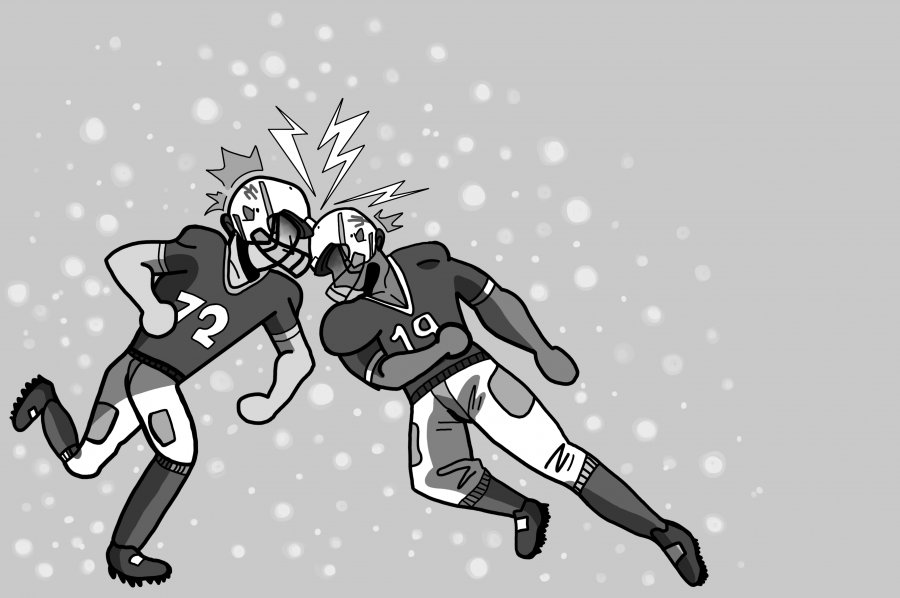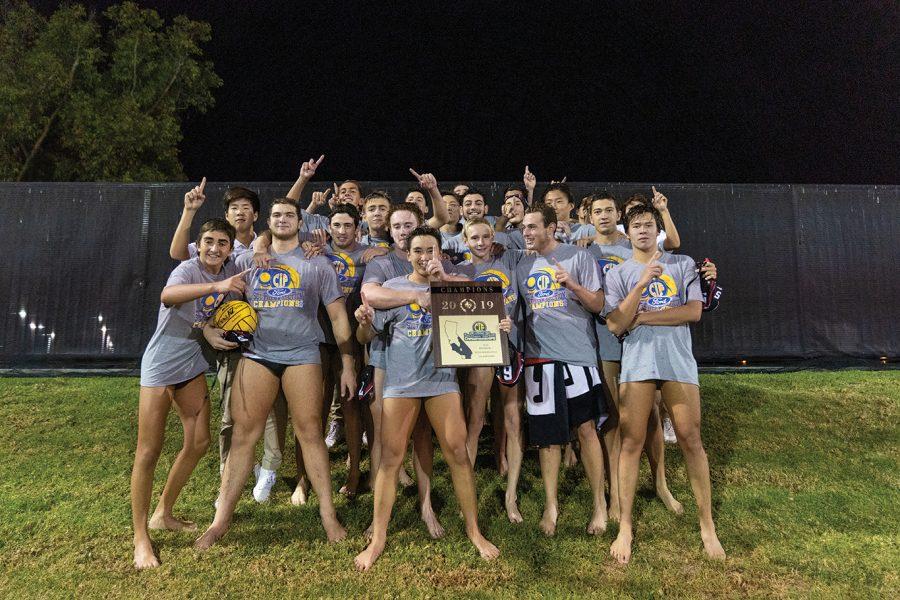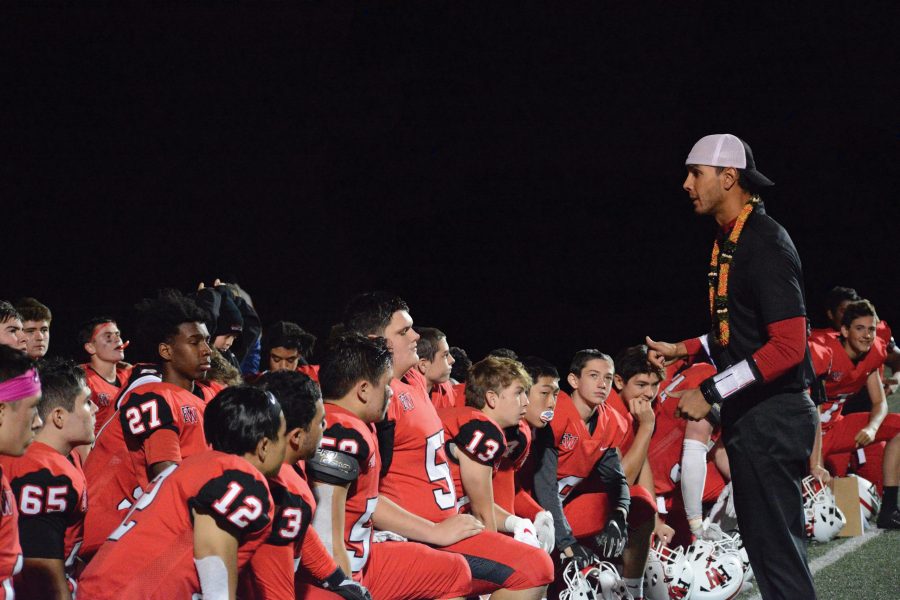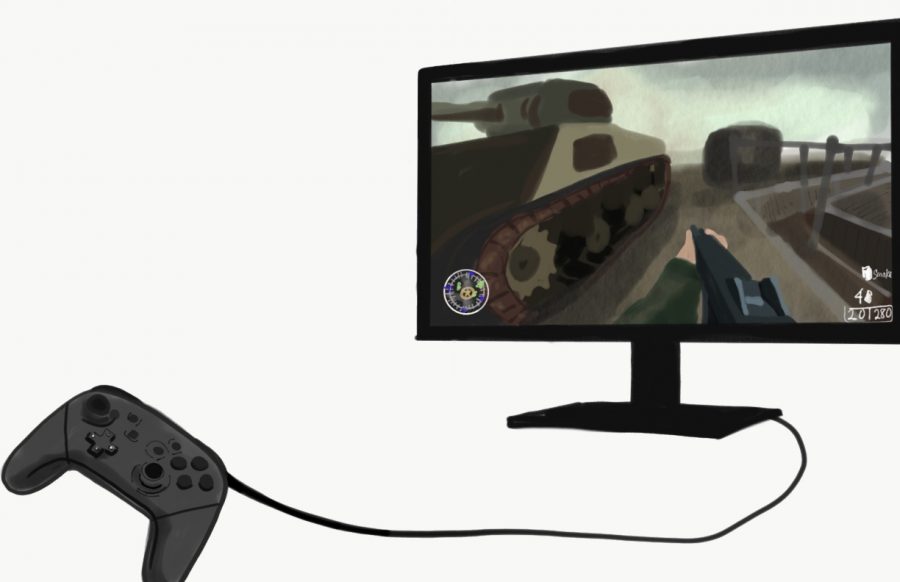In 2017, the football program made news by making an $8000 investment into a remote-controlled tackling dummy created by Rogers Athletic, which specializes in creating football practice equipment.
The then undefeated football team was on ABC News and was featured practicing with the dummy, which is designed to improve practice techniques, while also reducing the number of practice injuries.
However, according to linebacker Spencer Felix ’21, the team has not actually used the dummy consistently since the video.
“We have not used the robotic tackling dummy as much as we probably could,” Felix said. “It’s usually just in the shed. We just use the regular dummies rather than the robotic one.”
Over the last decade, sports analytics and technology have made their way into all sports leagues, with many professional teams using analytics to optimize in-game performance and reduce injuries among players.
Analytics were popularized by Oakland Athletics’ General Manager Billy Beane, who used data to make his team competitive on a small budget in the 2002 season. The squad went on a 20 game win streak, which later inspired “Moneyball: The Art of Winning an Unfair Game.”
For the football program, it knows how often its opponents run certain plays or formations, allowing them to be prepared defensively during games.
“We use a website called Hudl and with that we can get the percentages of how many times a team runs a certain play or uses certain formations,” Felix said. “This past season, on Monday, we would get packets with all this information or find out the information on the website. It helped use be aware of [a team’s] tendencies, so we know what was coming. It helped us be aware of what could be coming out of certain formations, so our defense was not on their heels.”
Other school programs, like the boys’ soccer team, also take advantage of new sports technology to improve its play. Last season, the boys’ soccer team used PlayerTek Vests, which tracked speed statistics such as distance covered, top speed and top acceleration.
The vests use GPS technology to track and analyze athletes’ performance and heart rate. Defender Liam Weetman ’21 said the technology allowed him to feel more confident and motivated him to work even harder.
“Looking at the stats made me feel more proud about my work ethic,” Weetman said. “It also caused the team to try and push each other to get the top speeds and distances in games, so we used the data as a competition.”
Weetman said he felt the vests worked because of the success they had last year in rivalry games.
“We tied Loyola [High School] last year, which is the closest I’ve ever gone to beating them, so I believe the vests worked really well,” Weetman said.
However, Weetman said that the squad is no longer allowed to use the technology after temporarily losing the vests on their team bus after one of its away games this season. While many teams utilize both statistics and advanced technology, the sports performance department uses Sparta Science technology across all of the athletic programs.
The technology is designed to optimize athletes’ in-game performance and understand their injury risk. Director of Sports Performance Jeff Crelling described how the technology works and its benefits.
“The Sparta, it’s a force plate, so we’re measuring how much force you are producing from a jump, so it measures your ability to transfer your weightlifting experience to real time and real world applications like a jump,” Crelling said. “It does so in a way that is really objective, so there is a number to it, so you can really quantify it and it does so in a way that helps you track your progress over time very quickly.”
Crelling also said that the technology cuts the time it takes to analyze data and allows athletes to be compared to a larger data base such as colegiate and professional athletes.
The machine is able to calculate force, measure explosiveness and generate a score for athleticism from a jump on the device.
“As soon as you’re done testing your jump, I can see what you did compared to all of the other jumps you have ever done instantaneously,” Crelling said. “It is all right in front of me in a graph form. I don’t have to do any other work after the jump, it is all finished. I can compare you to other people on the team, to other professional athlete in your sport and compare you to your pre-injury levels. It can also be a return to play tool as well.”
While these machines make it easier to analyze data, they also allow athletes who are already in top shape to push themselves even further, Crelling said.
“We had an athlete on the baseball team who was already at the upper echelon of explosiveness, strength and force,” Crelling said. “His lower body training was going really well, so we were able to track and monitor really small changes because the stronger you are, the smaller the gains you are going to get over time, so it can pick up on things like that.”
Crelling also described how the machine allows athletes to have more faith in their abilities.
“It is a good feedback tool for the athletes themselves,” Crelling said. “It gives them confidence in what they’re doing. It shows them their progress, which I think is important too.”
For the actual weight lifting practices, the sports performance department uses Bridge Athletic, an app that digitalizes all of a player’s data on an iPad.
Crelling outlined the efficiency of the software.
“Instead of printing out a sheet every three weeks and noticing there is something you don’t like, you can now make changes at the click of a button,” Crelling said. “With the athletes now, because they are putting all of their weights on the iPads, it allows them to see their weight history for a certain exercise.”
While advanced statistics have made their way into the MLB professional baseball during the last decade through metrics such as on base percentage, wins above replacement and on base plus slug, the wave has yet to hit the school’s baseball program, Vanderbilt University commit and outfielder Pete Crow Armstrong ’20 said.
“The whole advanced stats thing is not a topic of conversation in our program because I think we trust our abilities of what we do in practice and believe that will get us the wins that we want,” Armstrong said. “Things like [on base percentage] and batting average is cool, but it is also just personal reference for you to just improve or shooting for something higher than you’re doing.”
Catcher Bennett Markinson ’21 believes that all programs could benefit from the use of advanced statistics in their respective sports.
“I think that advanced statistics and technology should be used in all athletic programs because it allows the team to always have an advantage over its opponent, especially since most schools we face don’t use them,” Markinson said.








































